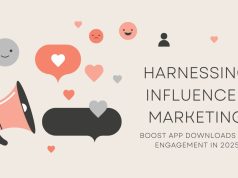In 2025, the mobile app landscape is more crowded and competitive than ever. Users demand seamless experiences, personalized interactions, and meaningful value from the apps they install. To stand out, app marketers must go beyond basic acquisition tactics and build a holistic ecosystem that drives downloads, engagement, retention, and revenue. In this comprehensive guide, we explore ten advanced strategies—from refining your App Store Optimization (ASO) to leveraging emerging channels like wearables and augmented reality (AR). Each section provides actionable tips and best practices to help you craft a scalable, data-driven app marketing approach for sustained growth.
1. Refining Your ASO Strategy
App Store Optimization remains the cornerstone of discoverability. In 2025, it’s no longer enough to target generic keywords; you need a nuanced approach. Start by conducting in-depth keyword research using AI-powered tools to uncover latent search terms and long-tail phrases with high intent. Regularly A/B test your app title, subtitle, and short description to maximize relevance. Optimize your app icon, screenshots, and preview video with micro-conversions in mind: each visual asset should highlight a core benefit or feature. Don’t forget to localize your metadata and assets for key markets, adapting imagery and messaging to cultural preferences. Finally, leverage real-time monitoring to track ranking shifts and competitor moves—then iterate quickly to maintain a top position.

2. Leveraging Advanced User Retention Techniques
Retaining users is more cost-effective than acquiring new ones, yet it remains an underutilized lever. Implement behavioral cohorts to segment users by onboarding speed, feature usage, and session frequency. For each cohort, craft targeted drip campaigns via email, push notifications, or in-app messages. Use dynamic content blocks to recommend features or content based on past interactions. Implement milestone-based rewards—unlock exclusive content or discounts when a user reaches specific engagement thresholds. Additionally, run periodic “re-engagement” campaigns to win back dormant users, offering time-limited incentives or personalized walkthroughs of newly released features. By focusing on the user lifecycle and creating value at every touchpoint, you’ll see retention rates climb and churn rates drop.
3. Personalization Through Data Segmentation
Personalization is no longer a nice-to-have; it’s expected. Harness first- and zero-party data—onboarding inputs, feature selections, and in-app behaviors—to build granular user profiles. From there, implement real-time recommendation engines to surface relevant content, products, or social connections. Use machine learning models to predict users’ next actions: will they upgrade to premium? Need a tutorial? Or could they churn? Preempt these outcomes by delivering tailored in-app experiences, such as guided walkthroughs or motivational pop-ups. Always ensure compliance with data privacy regulations by anonymizing and securing user data. A strong personalization strategy not only deepens engagement but also boosts monetization through targeted upsells and cross-sells.

4. Dynamic Push Notifications & In-App Messaging
Push notifications and in-app messages are powerful when they’re timely, relevant, and contextual. Move beyond batch messaging to trigger-based workflows: send prompts when a user abandons a key flow, like onboarding or a purchase funnel. Leverage geofencing to deliver location-based offers and reminders. Experiment with rich media notifications—GIFs, carousels, or interactive buttons—to drive higher click-through rates. In-app messages should feel native and unobtrusive: use slide-ins or tooltips to announce new features, guide users through complex tasks, or tease upcoming promotions. Monitor engagement metrics for each message variant, and refine send frequency to avoid notification fatigue. A data-driven approach ensures your communications foster delight rather than disruption.
5. Influencer & Community-Driven Growth
Influencer partnerships and community building can amplify your reach and credibility. Identify micro-influencers whose audiences align with your app’s niche—these collaborations often yield higher engagement and more authentic endorsements than celebrity campaigns. Provide them with exclusive app previews, custom promo codes, or co-created content. Simultaneously, cultivate owned communities on platforms like Discord, Slack, or Reddit. Host AMAs (Ask Me Anything) with your product team, organize user challenges, and spotlight top contributors. Encourage UGC (User-Generated Content) by running contests or featuring reviews and tutorials on your app’s social channels. By nurturing both external influencer networks and internal user communities, you’ll create social proof loops that drive organic downloads and strengthen brand loyalty.
6. Experimentation & A/B Testing
Continuous experimentation is key to unlocking incremental gains. Establish a culture of hypothesis-driven testing across all marketing touchpoints: app store pages, push campaigns, email flows, landing pages, and ad creatives. Use multi-armed bandit algorithms to allocate traffic dynamically to top-performing variants. Prioritize tests based on potential impact and ease of implementation, then roll out learnings across your entire marketing tech stack. Document results in a centralized repository to avoid redundant experiments and to scale successful tactics globally. Over time, this disciplined approach to optimization can yield significant uplifts in conversion rates and user satisfaction.
7. Harnessing Analytics for ROI Measurement
Attribution and ROI tracking remain challenging in the fragmented mobile ecosystem. Deploy a unified measurement solution—combining app analytics, mobile attribution platforms, and server-side event tracking—to capture end-to-end user journeys. Define clear, quantitative KPIs: cost per install (CPI), cost per action (CPA), lifetime value (LTV), and return on ad spend (ROAS). Use cohort analysis to compare performance across channels, campaigns, and creative sets. Implement data visualization dashboards for real-time insights, and automate alerts when performance deviates from benchmarks. By tying every dollar back to user behavior and revenue, you can reallocate budget to the highest-performing initiatives and justify continued investment in growth programs.

8. Privacy & Compliance as a Competitive Advantage
With global privacy regulations tightening, transparency and trust are paramount. Clearly communicate your data collection practices within the app and at the point of consent. Offer granular controls so users can manage preferences for analytics, personalization, and marketing communications. Consider privacy-first innovations like on-device machine learning, which enables personalized experiences without transferring raw data to servers. By positioning your app as a privacy-respecting alternative, you can attract users who are increasingly conscious of data security. This trust advantage can translate into higher retention rates and positive word-of-mouth referrals.
9. Emerging Channels: Voice, AR & Wearables
Staying ahead of the curve means exploring new interaction paradigms. Voice assistants are becoming integral to daily routines—optimize your app for voice search and build voice-enabled features for hands-free engagement. Augmented reality opens doors for immersive product demos, virtual try-ons, and location-based experiences. Wearables, from smartwatches to fitness trackers, offer micro-moment opportunities: push bite-sized content, health alerts, or personalized reminders. Run small-scale pilots to gauge user interest and iterate rapidly. Early adopters in these channels often reap disproportionate attention and PR, establishing their apps as innovators in a digital-first world.
10. Building a Holistic App Marketing Ecosystem
The most successful app marketing strategies integrate these tactics into a cohesive ecosystem. Align cross-functional teams—product, design, growth, and analytics—around shared KPIs. Centralize marketing automation and data pipelines to enable seamless orchestration of campaigns across channels. Regularly hold growth sprints to brainstorm new ideas, test hypotheses, and review performance metrics. Foster a feedback loop between customer support and marketing to capture user pain points and feature requests. By breaking down silos and embracing agility, you’ll build a resilient marketing engine capable of sustaining rapid growth and adapting to evolving market conditions.
Conclusion
In 2025, achieving app marketing excellence demands more than quick fixes—it requires a strategic, data-driven ecosystem that blends ASO, personalization, retention tactics, community engagement, and emerging channels. By continuously experimenting, measuring ROI, and prioritizing user trust, you can craft campaigns that not only drive downloads but also foster long-term loyalty and revenue growth. Start implementing these advanced strategies today to stay ahead of the competition and unlock your app’s full potential.
Ready to elevate your app marketing? Share your experiences in the comments or reach out for a personalized growth audit.







